✓ Joining us on our Whatsapp Channel: 💬 Explore and Escape!.
Booking through us:
✓ 🏩 🛌 Handpicked Luxury Stays in Budget: Booking.com | Agoda.com
✓ 🍹⛱️ Deals on Private xfers, SIM Cards, City tours, Day trips : 📍🗺️ GetYourGuide | 🛵🧳 Klook
com/landmarks/oceania-landmarks/landmarks-of-australia/”>landmarks in Europe, and so are in Cyprus.
Cyprus, like a treasure chest, is packed with ancient landmarks that offer glimpses into its rich history and culture.
From the soaring heights of the Kyrenia Mountains to the tranquil shores of Paphos, each landmark holds a story, a secret, and a glimpse into the soul of this enchanting island.
1. Petra tou Romiou
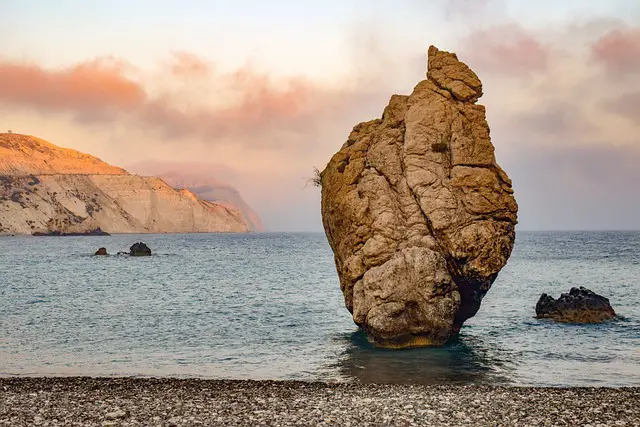
A legendary rock formation located on the coast of Cyprus.
What to see or do: Visitors can admire the impressive natural beauty of the area, take photos of the famous rock formation, and swim or sunbathe on the nearby beach.
Don’t miss: The mythological story associated with the site, which relates to the birth of the Greek goddess Aphrodite.
Insider travel tips: It is recommended to visit the site early in the morning or later in the afternoon to avoid crowds and the heat of the day.
Additionally, wear comfortable shoes and bring sunscreen and plenty of water with you.
2. Kykkos Monastery
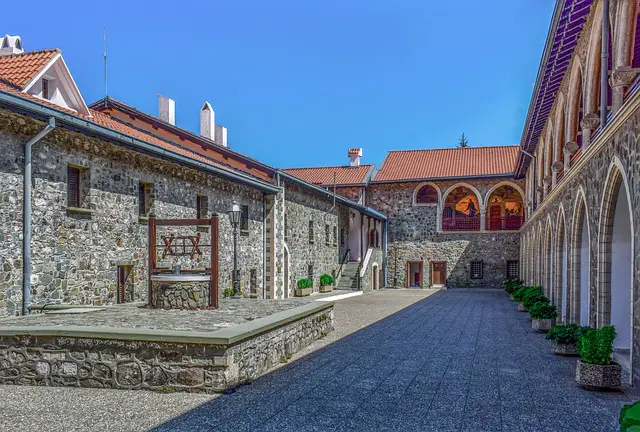
Kykkos Monastery is a historic and famous monastery situated in the Troodos Mountains in Cyprus. It is one of the wealthiest and most lavish Byzantine monasteries in the country.
What to see or do: Visitors can admire the monastery’s beautiful architecture, impressive mosaics, and religious artifacts. The church of Kykkos Monastery houses an important icon of the Virgin Mary, which is believed to have miraculous powers.
Don’t miss: One of the most stunning features of the monastery is the golden iconostasis, a gilded screen adorned with intricate religious artwork.
Also, the Kykkos Monastery Museum displays an impressive collection of priceless religious artifacts and icons.
Insider travel tips: To avoid big crowds, plan your visit to the Kykkos Monastery during the early morning hours or in the late afternoon.
Also, dress appropriately when visiting the monastery, covering your shoulders and wearing long pants or a skirt. Finally, don’t forget to purchase some of the famous Kykkos Monastery honey, which is sold in the monastery’s gift shop.
3. Kourion
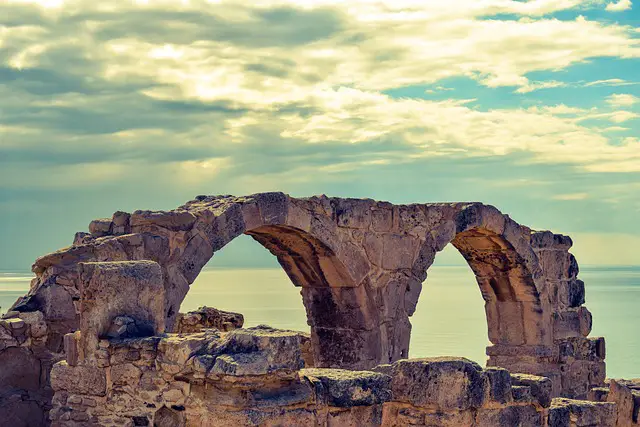
Kourion is a historic archaeological site located on the southwestern coast of Cyprus.
What to see or do: Visitors can explore the well-preserved ruins of Kourion including a Roman theater, public baths, and a nymphaeum. The site also offers stunning views of the Mediterranean Sea and surrounding landscapes.
Don’t miss: The stunning mosaics found in the House of Eustolios and the intricate floor designs in the public baths are not to be missed.
Additionally, the historic amphitheater is a must-see, as it once hosted performances for up to 3,500 spectators.
Insider travel tips: To avoid the crowds and heat, it’s best to visit Kourion early in the morning or during the cooler months of spring or fall.
Be sure to wear comfortable walking shoes and bring plenty of sunscreen and water as the site requires a lot of walking.
For those interested in ancient history, consider hiring a guide to provide additional information and insights.
4. Tombs of the Kings
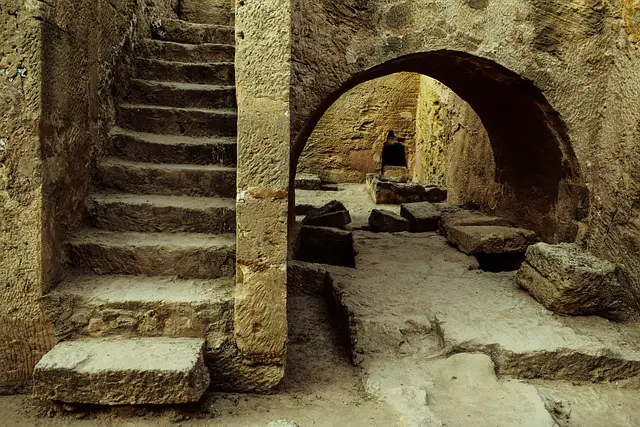
A UNESCO World Heritage Site located in Paphos, Cyprus that consists of several underground tombs and chambers dating back to the 4th century BC.
What to see or do: Explore the impressive tombs and underground chambers that served as the final resting place for high-ranking officials and aristocrats of Cyprus.
Admire the intricate carvings and designs that adorn the walls and ceilings of these ancient burial sites.
Don’t miss: The Tomb of the Kings is the largest and most impressive tomb in the complex, with its grand entrance and multiple chambers.
Also, try to catch one of the hourly tours to learn even more about the history and significance of the site.
Insider travel tips: Be sure to wear comfortable shoes as you will do a lot of walking in the rocky terrain. Additionally, bring sunscreen and water as the area can get hot and there is little shade available.
Finally, arrive early in the day before the crowds gather to fully appreciate the site.
5. Kolossi Castle
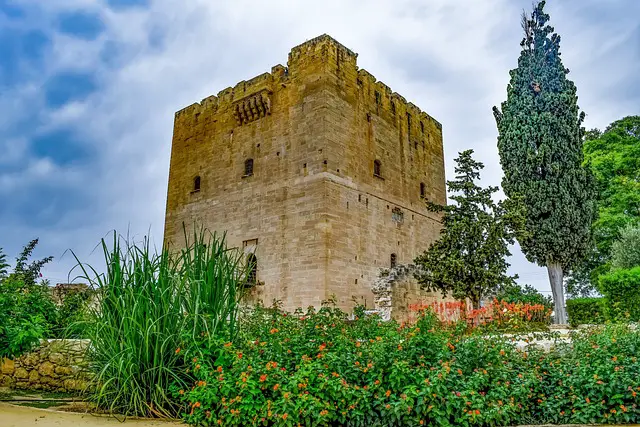
A medieval castle located in the village of Kolossi, Cyprus.
What to see or do: Explore the well-preserved castle and its surrounding area that served as a strategic military base during the Crusades era. Observe the architecture of the castle that includes a large central courtyard, a tower, and vaulted rooms.
Learn about the historical significance of the castle by visiting the small museum on site.
Don’t miss: The opportunity to climb to the top of the tower and enjoy the spectacular view of the surrounding countryside and the Mediterranean Sea.
Insider travel tips: Wear comfortable shoes as there are stairs to climb and uneven surfaces to walk on. Avoid visiting on hot summer days as there is little shade and the temperatures can be high.
Consider combining a visit to Kolossi Castle with nearby attractions such as the Cyprus Wine Museum or the archaeological site of Kourion.
6. Paphos Castle
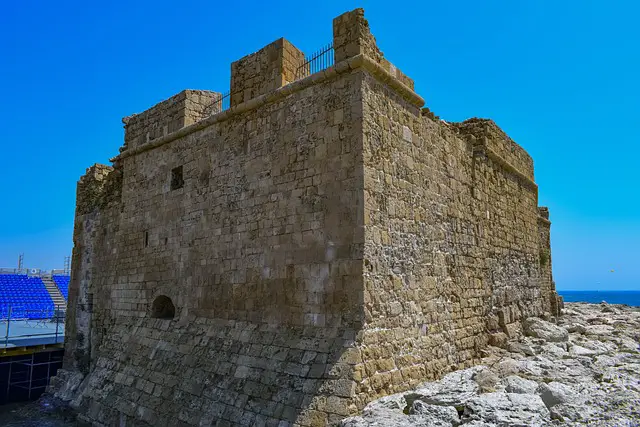
Paphos Castle is an iconic medieval fortress located at the end of the picturesque Paphos harbor in Cyprus.
What to see or do: Get ready to travel back in time as you explore the castle’s well-preserved walls, halls, and chambers that are adorned with awe-inspiring architecture, intricate carvings, and fascinating exhibits showcasing the castle’s rich history.
The commanding views of the Mediterranean Sea and the harbor from the top of the castle are not to be missed.
Don’t miss: Make sure to visit the castle’s museum that houses a stunning collection of artifacts from various periods, including pottery, Byzantine icons, and weaponry.
Don’t forget to take your camera to capture breathtaking shots of the stunning sunset over the harbor.
Insider travel tips: – For a hassle-free visit, consider joining a guided tour of the castle.
7. Limassol Castle
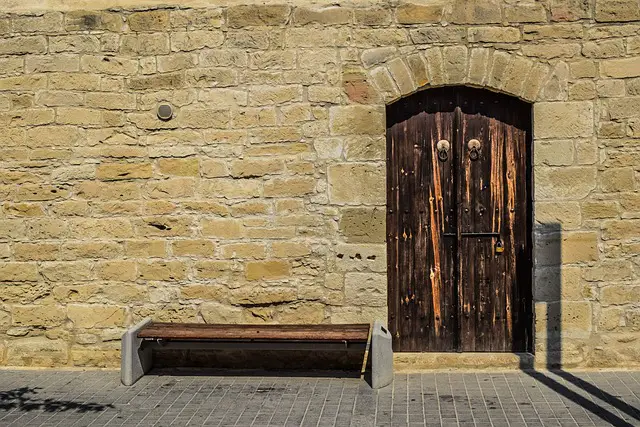
Limassol Castle is a medieval fortress located in the heart of Limassol, Cyprus.
What to see or do: Visitors can explore the castle’s history museum, which showcases artifacts from the medieval and Ottoman periods, including pottery, weapons, and armor.
The castle also features a small chapel and a courtyard area.
Don’t miss: Be sure to visit the castle’s underground chambers, which were used as prison cells during the Ottoman era.
Also, make sure to climb to the top of the castle’s tower for panoramic views of the city and the sea.
Insider travel tips: To avoid crowds, visit the castle early in the morning or later in the afternoon. Also, wear comfortable shoes as navigating the castle’s narrow staircases and uneven floors can be challenging.
Lastly, if you’re interested in learning more about the castle’s history, consider hiring a guide or attending one of the museum’s guided tours.
8. Kantara Castle
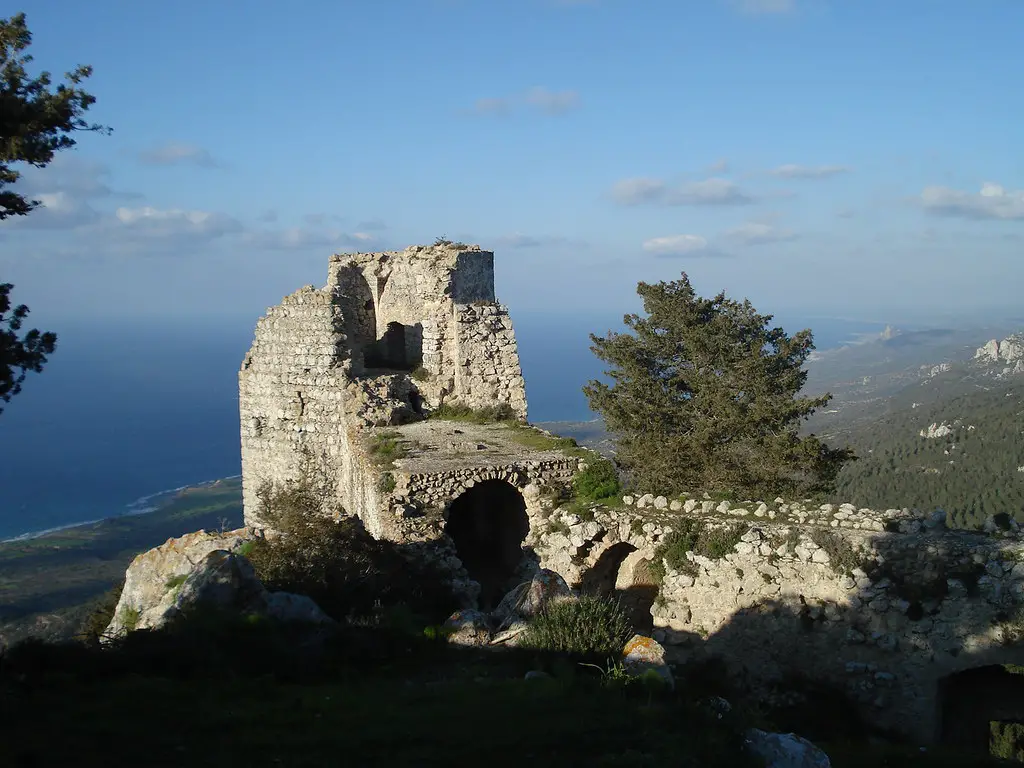
Kantara Castle is a well-preserved medieval castle located on the crest of the Besparmak Mountains in Northern Cyprus.
What to see or do: Visitors can explore the castle’s many rooms, towers, and outdoor spaces and enjoy the stunning views of the surrounding landscape, including views of Famagusta Bay and the Karpaz Peninsula.
Don’t miss: Don’t miss the opportunity to climb to the top of the castle’s main tower for a panoramic view of the surrounding area.
Insider travel tips: If you plan on visiting Kantara Castle, be sure to wear comfortable shoes as the terrain can be quite rocky and uneven.
It’s also a good idea to arrive early in the day to beat the crowds and avoid the heat, especially in the summer months.
Finally, be sure to bring plenty of water and sunscreen as there is little shade inside the castle walls.
9. Larnaca Salt Lake
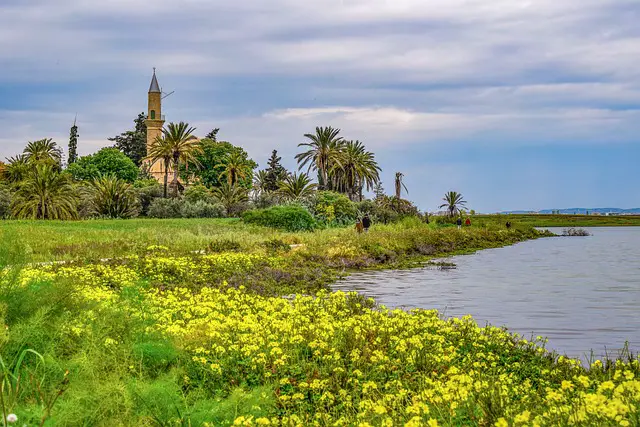
Larnaca Salt Lake is a sprawling network of four interconnected salt lakes located in the city of Larnaca, Cyprus.
What to see or do: The Salt Lake is a great destination for nature lovers, birdwatchers and photographers. You can enjoy a leisurely walk or bike ride on the perimeter road around the lake.
You can also explore a number of walking trails that lead to observation hides from where you can spot a variety of bird species, including flamingos, coots, herons, ducks, geese and many more.
Don’t miss: Don’t miss the opportunity to catch the stunning sunset over the lake, especially during the winter months when a pinkish hue sets over the lake.
It’s also worth a visit during the summer season as the blooming of Artemia Salina, a tiny shrimp, gives rise to an array of colors, from pink to orange.
Insider travel tips: – The best time to visit the Salt Lake is during the winter months when it is filled with water and is teeming with migratory birds.
10. Cape Greco
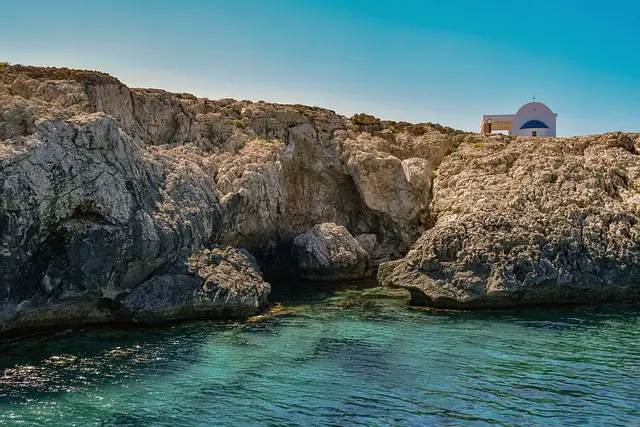
A rocky headland located on the south-eastern coast of Cyprus.
What to see or do: Enjoy stunning views of the Mediterranean Sea, go hiking on its nature trails, explore underwater caves while scuba diving or snorkeling.
Don’t miss: Visiting the Sea Caves, a network of natural caves and passages that have been carved out by the sea.
Insider travel tips: Visit early in the morning or later in the evening to avoid the crowds. Wear comfortable shoes and bring plenty of water for hiking.
If you’re scuba diving, be aware of the currents and only dive with a reputable company.
11. Ayia Napa Monastery
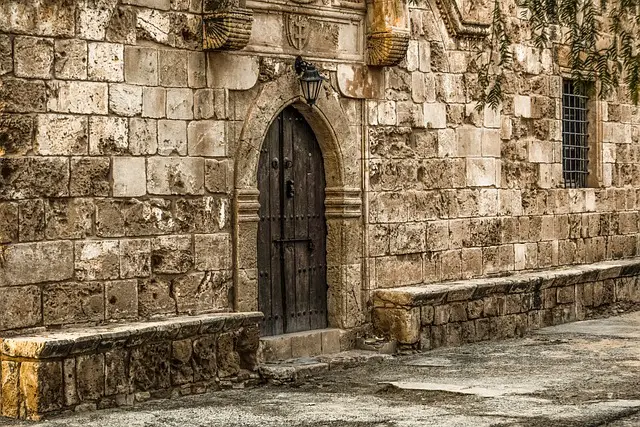
Ayia Napa Monastery, also known as the Monastery of Virgin Mary, is a 16th-century monastery located in the heart of Ayia Napa town in Cyprus.
What to see or do: Visitors can admire the stunning architecture and serene atmosphere of the monastery, as well as explore the beautiful gardens and courtyards.
The monastery also houses a small museum that displays religious artifacts and icons.
Don’t miss: Don’t miss the opportunity to attend one of the monastery’s daily services, which provide a unique glimpse into the religious culture of Cyprus.
Visitors can also light a candle and make a wish at the monastery’s chapel.
Insider travel tips: – Dress modestly when visiting the monastery, as it is a religious site.
12. Ancient Kition
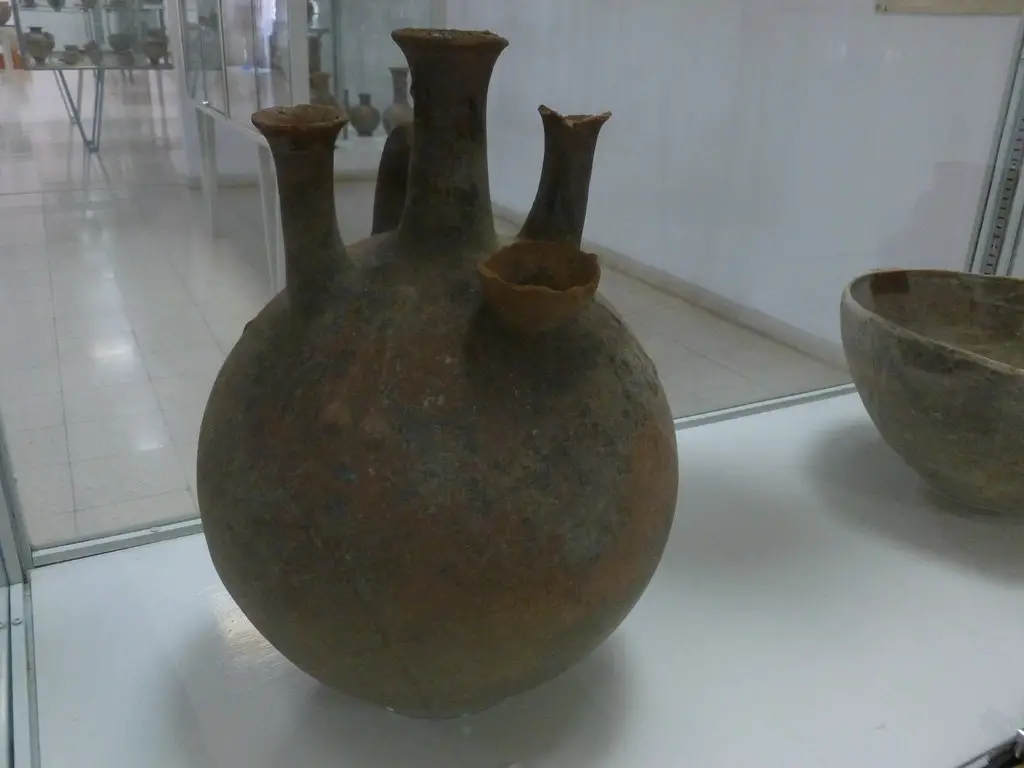
Ancient Kition is an archaeological site located in Larnaca, Cyprus, that dates back to the 13th century BC.
What to see or do: Visitors can explore the ruins of the ancient city, which includes a well-preserved Phoenician temple, the remains of a Mycenaean palace, and a necropolis.
The site also offers stunning views of the Mediterranean Sea.
Don’t miss: Be sure to check out the remains of the Phoenician wall, which was built in the 9th century BC and is still standing today.
Another highlight is the impressive entrance of the palace, which includes columns and intricate carvings.
Insider travel tips: Bring sunscreen and a hat as there is little shade on the site. Also, be prepared to do some walking as the ruins are spread out.
It’s recommended to visit in the early morning or late afternoon to avoid the mid-day heat.
13. Hala Sultan Tekke
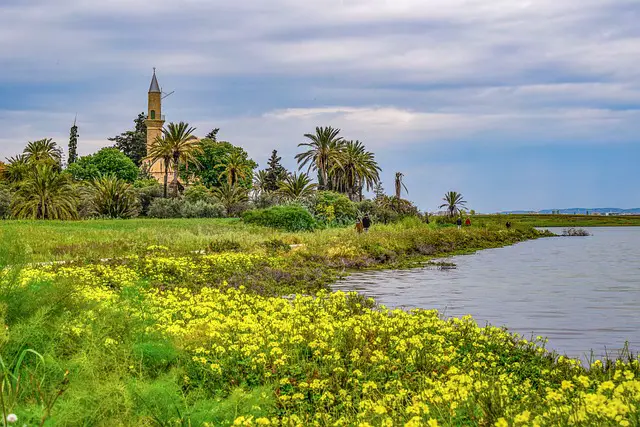
Hala Sultan Tekke is a mosque located on the west bank of Larnaca Salt Lake in Cyprus.
What to see or do: Visitors can explore the beautifully designed mosque and its surrounding gardens.
They can also learn about the history of the mosque, which is considered to be one of the holiest Muslim shrines in the world.
Don’t miss: Don’t miss the chance to see the tomb of Umm Haram, the aunt of the Prophet Muhammad. The tomb is located within the mosque and is considered to be a sacred site for Muslims.
Insider travel tips: – Visitors should dress modestly and remove their shoes before entering the mosque.
14. Famagusta Walls
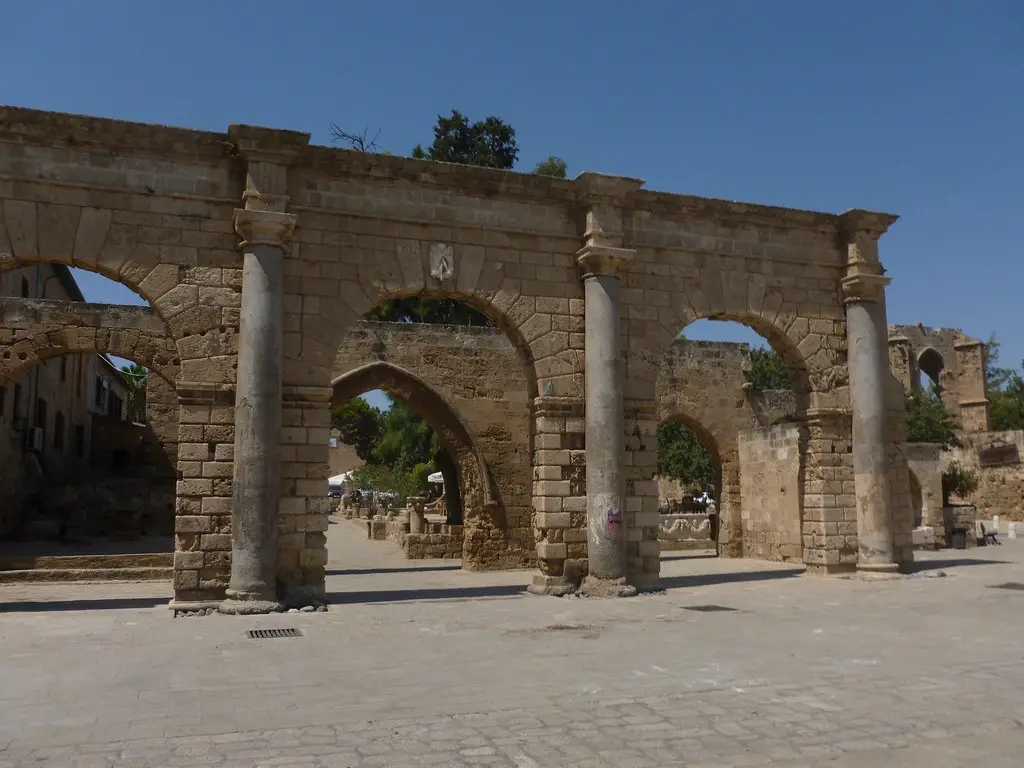
A historic fortification system in the city of Famagusta, Cyprus.
What to see or do: Visitors can walk along the walls and explore the various bastions and gates, some of which date back to the Venetian period.
The walls offer stunning views of the city and the coastline.
Don’t miss: The Othello Tower, which is located within the walls and is believed to have inspired Shakespeare’s play Othello. The tower now houses a museum with exhibits on the city’s history.
Insider travel tips: The best time to visit the walls is early morning or late afternoon to avoid the heat of the day. Wear comfortable shoes as the walls involve some walking and climbing.
It’s also worth hiring a guide to learn more about the history and significance of the walls.
15. Mosaic of Paphos
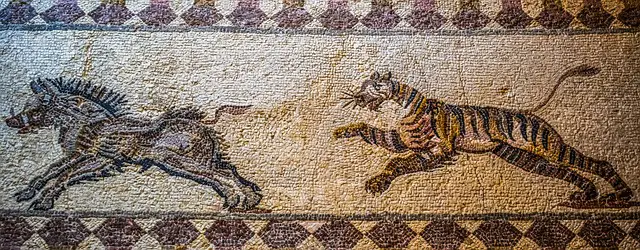
The Mosaic of Paphos is an ancient mosaic dating back to the 3rd century AD and is located in the city of Paphos in Cyprus.
What to see or do: Visitors can see the well-preserved mosaic on display, which depicts scenes from Greek and Roman mythology. The beautiful and intricate design of the mosaic is a testament to the impressive craftsmanship of the ancient world.
Don’t miss: Don’t miss the opportunity to see the famous image of Dionysos riding a panther, which is the centerpiece of the mosaic.
The other scenes, including the beauty contest between Athena, Hera, and Aphrodite, are also worth taking time to appreciate.
Insider travel tips: It’s best to visit the Mosaic of Paphos early in the morning or late in the afternoon to avoid the crowds and the heat.
Also, be sure to wear comfortable shoes, as there is a fair amount of walking involved. Finally, make sure to bring a camera to capture the beauty of the mosaic.
16. Ancient Salamis
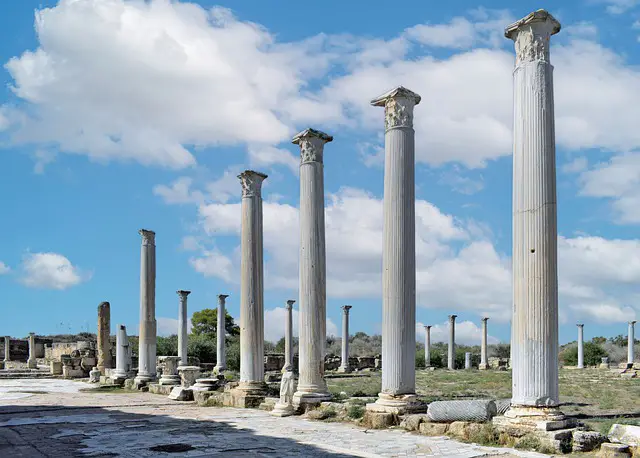
Ancient Salamis is an archaeological site located on the east coast of Cyprus near the modern-day city of Famagusta.
What to see or do: Visitors can explore the extensive ruins of the city including the gymnasium, theater, and Roman baths. The city was founded in the 11th century BC and was a major center of trade and culture for centuries.
Don’t miss: The impressive amphitheater that once held up to 15,000 spectators is a must-see. The elaborate mosaics found in the Roman baths are also a highlight of the site.
Insider travel tips: Be sure to wear comfortable shoes as there is a lot of walking involved. It’s also recommended to bring a hat and sunscreen as the site is mostly uncovered.
Consider hiring a guide to enhance the understanding of the site’s rich history.
17. Bellapais Abbey
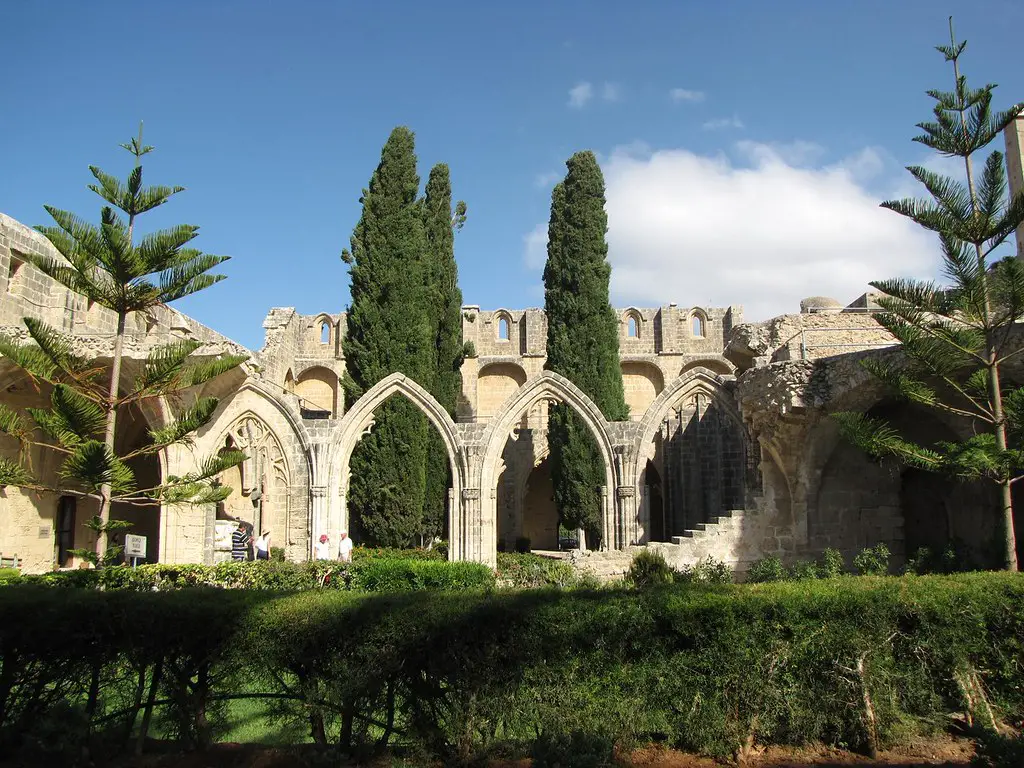
Bellapais Abbey is a stunning ruined abbey located on the hills above the charming town of Bellapais in Northern Cyprus.
What to see or do: Visitors can explore the impressive Gothic architecture and beautiful gardens of the abbey, which was founded in the 13th century. The abbey also hosts a variety of cultural events throughout the year, including classical music concerts and art exhibitions.
Don’t miss: Be sure to stop by the Refectory, which now serves as a museum showcasing the history and culture of the region.
Also, don’t forget to take in the stunning panoramic views of the surrounding landscape from the top of the abbey.
Insider travel tips: If you’re interested in history, consider hiring a local guide who can provide additional insight into the fascinating past of this ancient abbey.
Additionally, try to visit Bellapais Abbey early in the morning or late in the afternoon to avoid the crowds and get the best lighting for your photos.
18. Buyuk Han
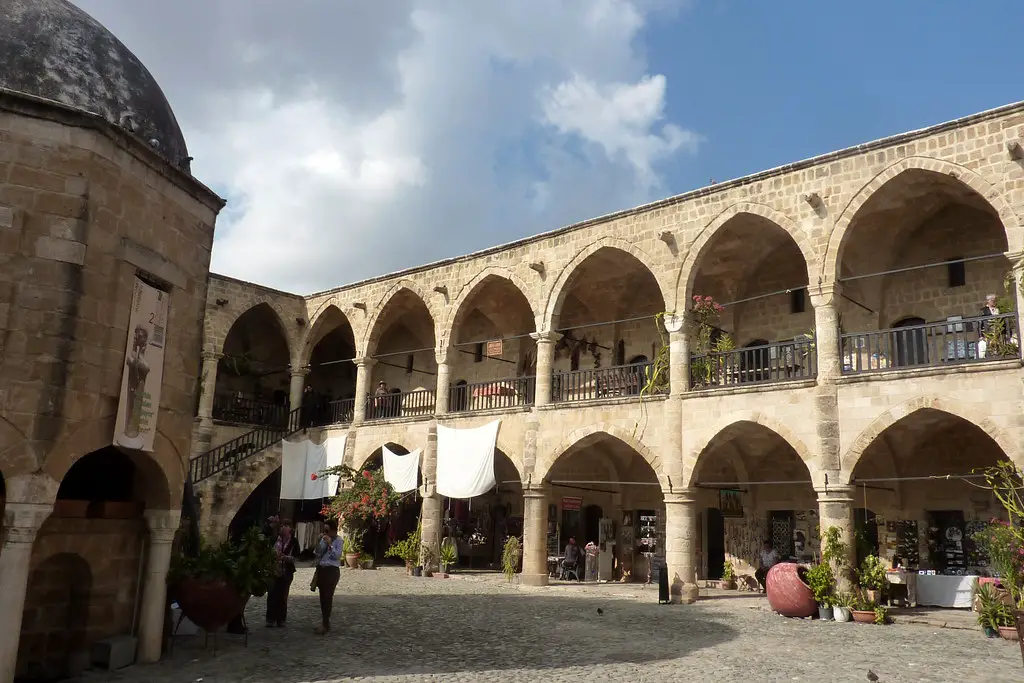
Buyuk Han is a historic building located in the heart of Nicosia, Cyprus.
It was built in the 16th century and has served many purposes over the years, including as a marketplace, a caravanserai, and a prison.
What to see or do: Visitors can explore the intricate architecture and design of the building, including its beautiful courtyard and the many shops and restaurants housed within.
It is a great place to shop for souvenirs and local crafts and to dine on traditional Cypriot cuisine.
Don’t miss: Be sure to check out the small museum located within the Buyuk Han, which showcases the history and significance of the building and its many uses over the years.
Also, take a walk around the rooftop terrace for stunning views of the surrounding area.
Insider travel tips: For an authentic experience, visit the Buyuk Han in the evening when the shops and restaurants come alive with locals and visitors.
Be sure to try the traditional Cypriot coffee and pastries for an authentic taste of the local culture.
19. Venetian Walls of Nicosia

Venetian Walls of Nicosia are a series of fortifications built by the Venetians around the city of Nicosia in the 16th century.
What to see or do: Visitors can take a leisurely walk along the walls and explore the historic gates and bastions. The walls offer stunning views of the old town of Nicosia and its surroundings.
Don’t miss: The Famagusta Gate, which is the most elaborate and well-preserved of the three gates that lead into the old town, is a must-see attraction.
The Kyrenia Gate, which is the northern gate, is also worth a visit.
Insider travel tips: Make sure to wear comfortable shoes as the walls are quite lengthy. Also, visiting during the early morning or late afternoon is best to avoid the heat of the day.
20. Ledra Street

A popular pedestrian shopping street in the heart of Nicosia, Cyprus.
What to see or do: Enjoy a leisurely stroll down the street, check out the variety of shops, restaurants, and cafes along the way.
Don’t miss: Ledra Palace crossing point which serves as a symbolic reminder of the division between the Greek and Turkish sides of the city.
Insider travel tips: Try to avoid visiting on weekends as it can get quite crowded. Don’t forget to bring your passport if you want to cross over to the Turkish side of the city.
21. Cyprus Museum
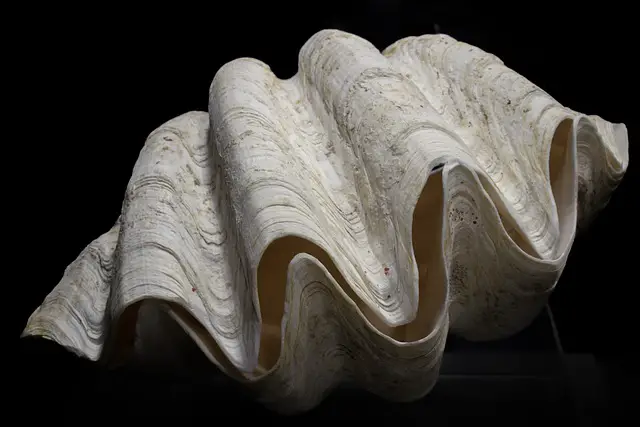
Cyprus Museum is the largest archaeological museum in Cyprus featuring a vast collection of artifacts spanning over 9,000 years of the island’s history.
What to see or do: Visitors can explore the museum’s 14 galleries which showcase prehistoric and ancient artifacts that reveal the history, culture, and art of Cyprus.
Additionally, the museum also has exhibits displaying religious artifacts, sculptures, pottery, jewelry, and coins.
Don’t miss: Don’t miss the museum’s most popular exhibit, the Golden Leaves of the Mycenaean Era, which features the world’s oldest gold jewelry from 2,500 BC.
Insider travel tips: – The museum is closed on Mondays, so plan your visit accordingly.
22. Archbishop Makarios III Cultural Foundation
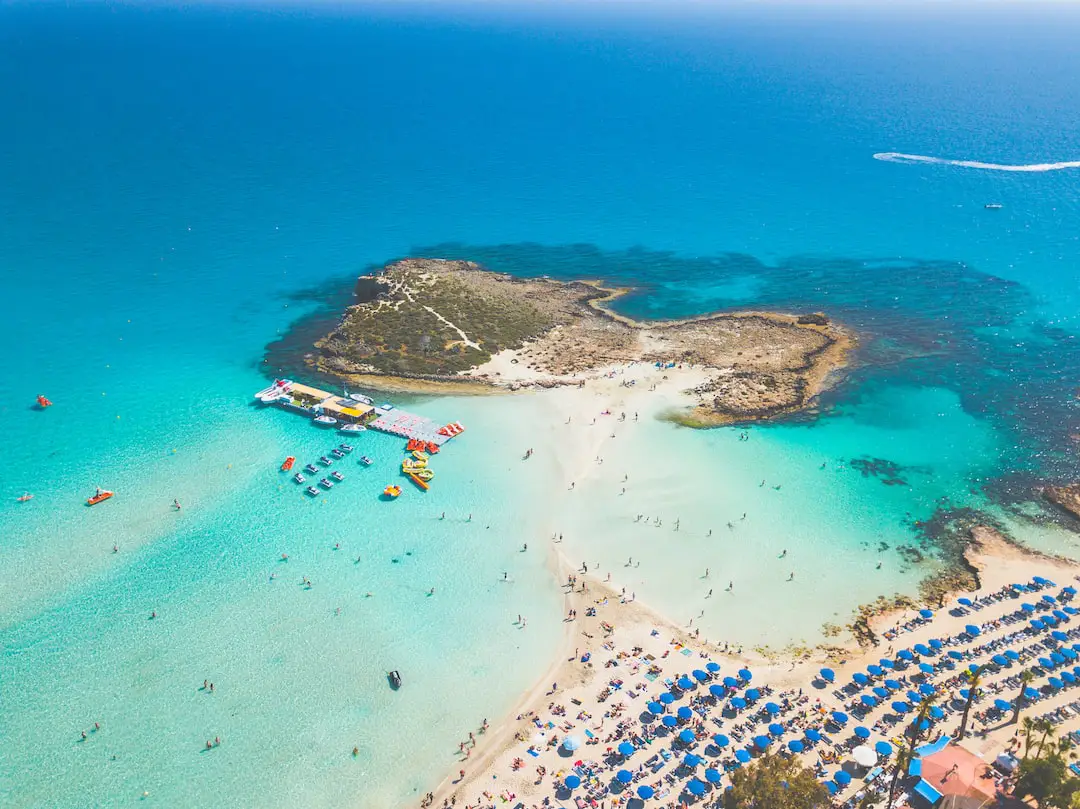
Archbishop Makarios III Cultural Foundation is a museum and cultural center in Nicosia, Cyprus that showcases the life and work of the first president of Cyprus, Archbishop Makarios III.
What to see or do: The museum houses a fascinating collection of photographs, personal belongings, and documents of Archbishop Makarios III, providing visitors with an insight into his personal and political life.
The center also hosts a variety of cultural events and exhibitions, including visual arts, theater performances, and musical concerts.
Don’t miss: Don’t miss the opportunity to explore the foundation’s tranquil gardens, where you can relax and enjoy the stunningly beautiful surroundings. The garden is home to a variety of indigenous Cypriot flora and fauna.
Insider travel tips: – The foundation’s entrance fee is very reasonable.
23. Nissi Beach
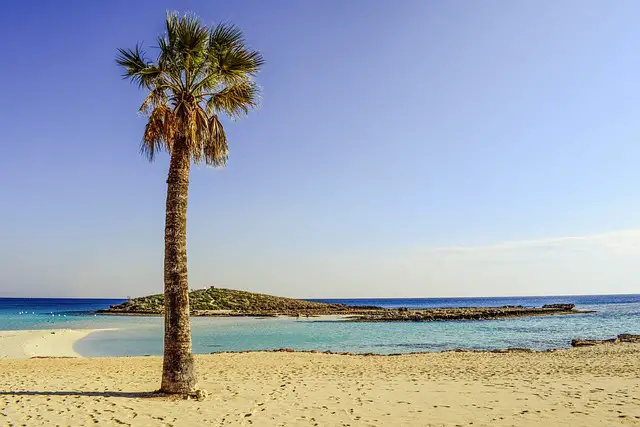
A beautiful and popular beach located in Ayia Napa, Cyprus with crystal clear waters, golden sand, and a lively atmosphere.
What to see or do:
Don’t miss:
Insider travel tips: ● Arrive early in the morning to get the prime beach spot before the crowds hit.
24. Fig Tree Bay
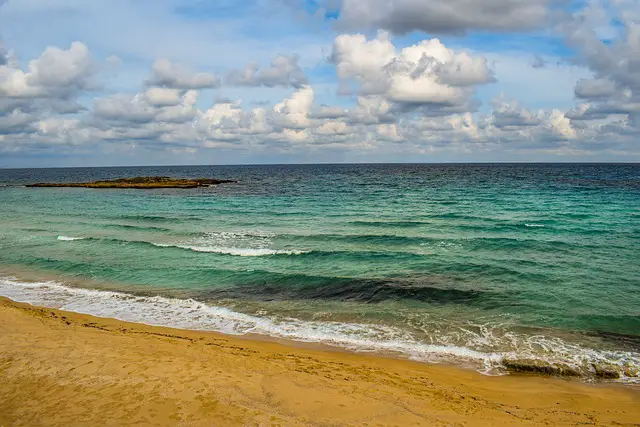
Fig Tree Bay is a popular beach destination located in Protaras, Cyprus.
What to see or do: Visitors can enjoy swimming in the crystal-clear waters, sunbathing on the sandy beach, snorkeling, diving, and various water sports activities such as jet skiing and parasailing.
Don’t miss: Don’t miss the opportunity to take a walk along the beautiful coastal promenade, where you can find a variety of restaurants, cafes, and souvenir shops.
Insider travel tips: – Fig Tree Bay can get crowded during peak tourist season, so plan your visit accordingly.
25. Lara Bay Turtle Conservation Station
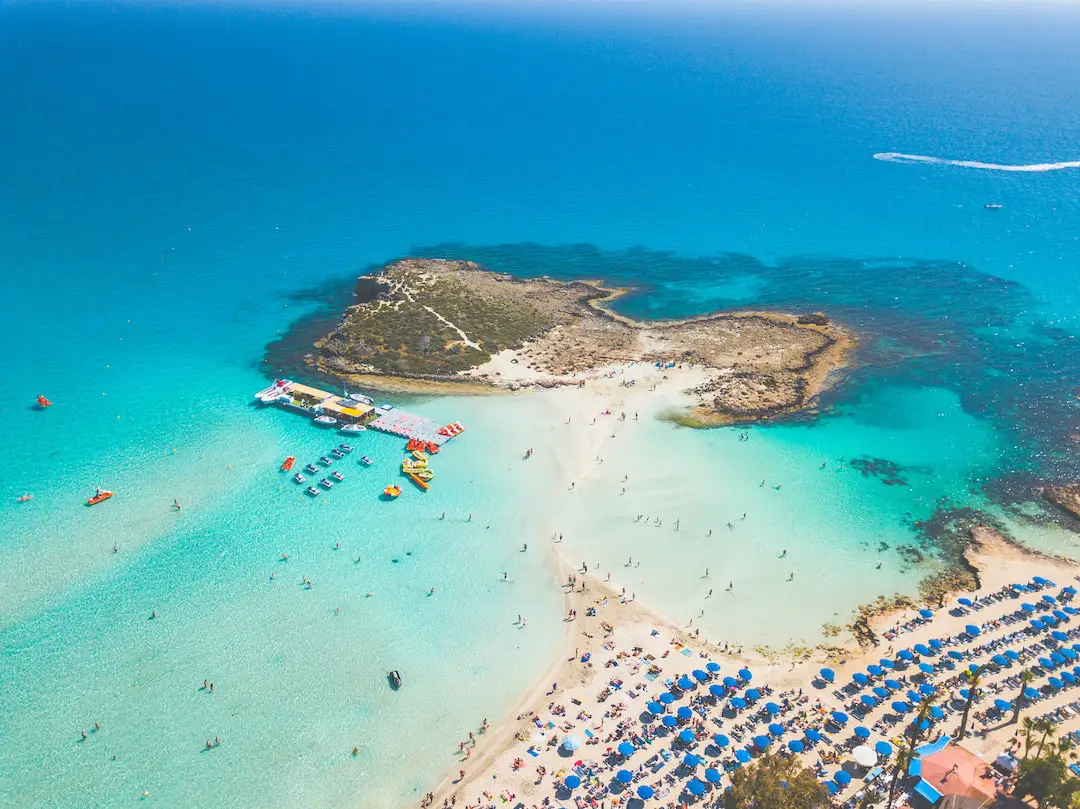
The Lara Bay Turtle Conservation Station is a key conservation area in Cyprus, dedicated to the preservation of two of the island’s most endangered sea turtle species – Green and Loggerhead turtles.
What to see or do: Visitors can take a guided tour of the station to learn about the turtles’ life cycle, habitat, and behavior.
You can see the conservation team in action, monitoring and protecting the turtle nests, as well as rehabilitating injured turtles and releasing them back into the wild.
Don’t miss: The highlight of any visit is to witness turtle hatchlings being released into the sea. Don’t miss the chance to see these adorable creatures make their way to the ocean for the first time.
Insider travel tips: – Plan your visit during the summer months (June to August) when the turtles are nesting and hatching, for the best chances of seeing them.
26. Zenobia Wreck
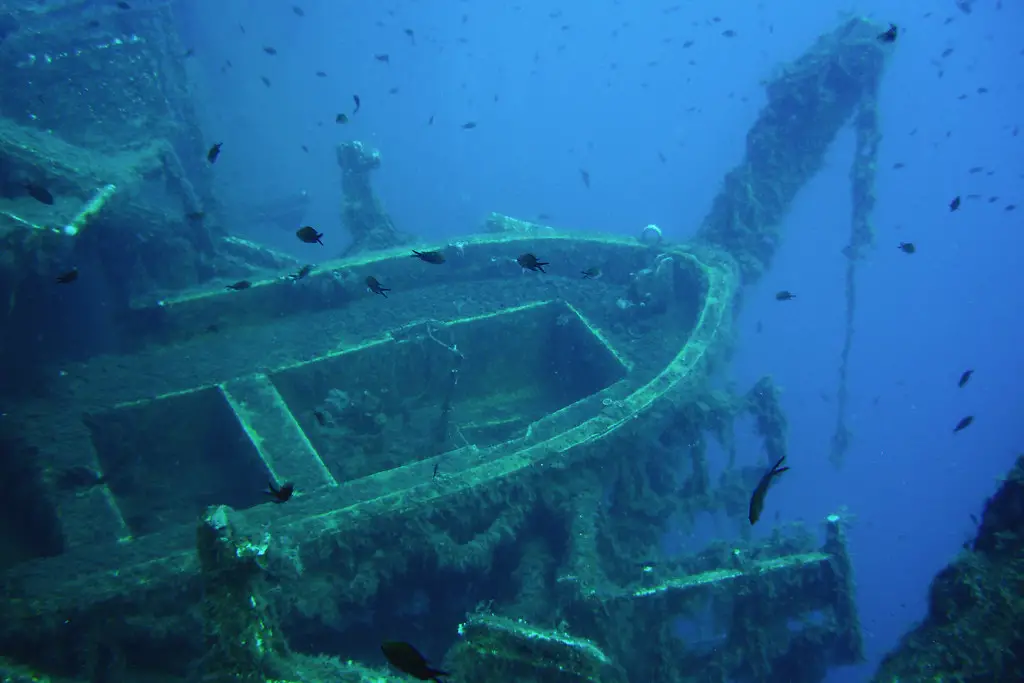
The Zenobia is a sunken cargo ship in the Mediterranean Sea near the town of Larnaca, Cyprus. It sank on its maiden voyage in 1980 and has since become one of the world’s top diving sites.
What to see or do: Scuba divers can explore the ship and observe the perfectly preserved cargo still intact in the holds, including trucks, cars, and even toilets.
There are also many marine species living around the wreck, making it a vibrant ecosystem and a beautiful snorkeling site for non-divers.
Don’t miss: The propellers, which are still in full view and make for an impressive sight. There’s also a nearby buoy that marks the wreck that makes for a great photo opportunity.
Insider travel tips: Be sure to dive with a reputable diving center or instructor who is certified to dive in the area as the currents can be strong.
Also, visit during the summer months when the visibility is at its best. For a unique experience, consider taking a night dive to witness the wreck come to life.
27. Troodos Mountains
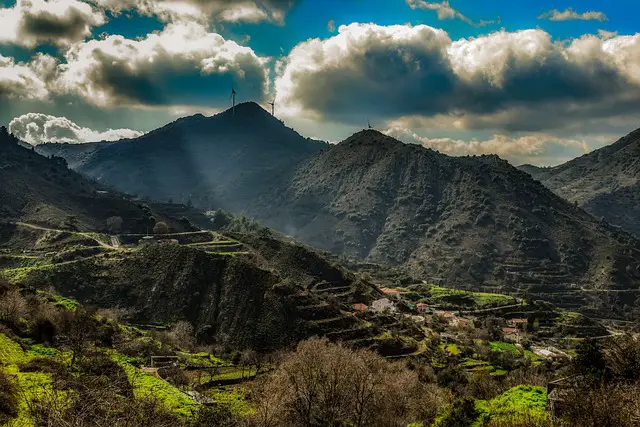
The Troodos Mountains are the largest mountain range in Cyprus and offer stunning natural beauty, charming villages, and historical and religious landmarks.
What to see or do: Visit the Kykkos Monastery, the most famous and wealthiest monastery on the island, home to a miraculous icon of the Virgin Mary.
Don’t miss: Don’t miss the opportunity to visit the village of Omodos, one of the most picturesque in the entire country and home to narrow streets, traditional-style houses, and the Church of the Holy Cross.
Insider travel tips: The weather in the Troodos Mountains can be unpredictable, even in the summertime, so pack warm clothing and rain gear whenever you go.
28. Akamas Peninsula
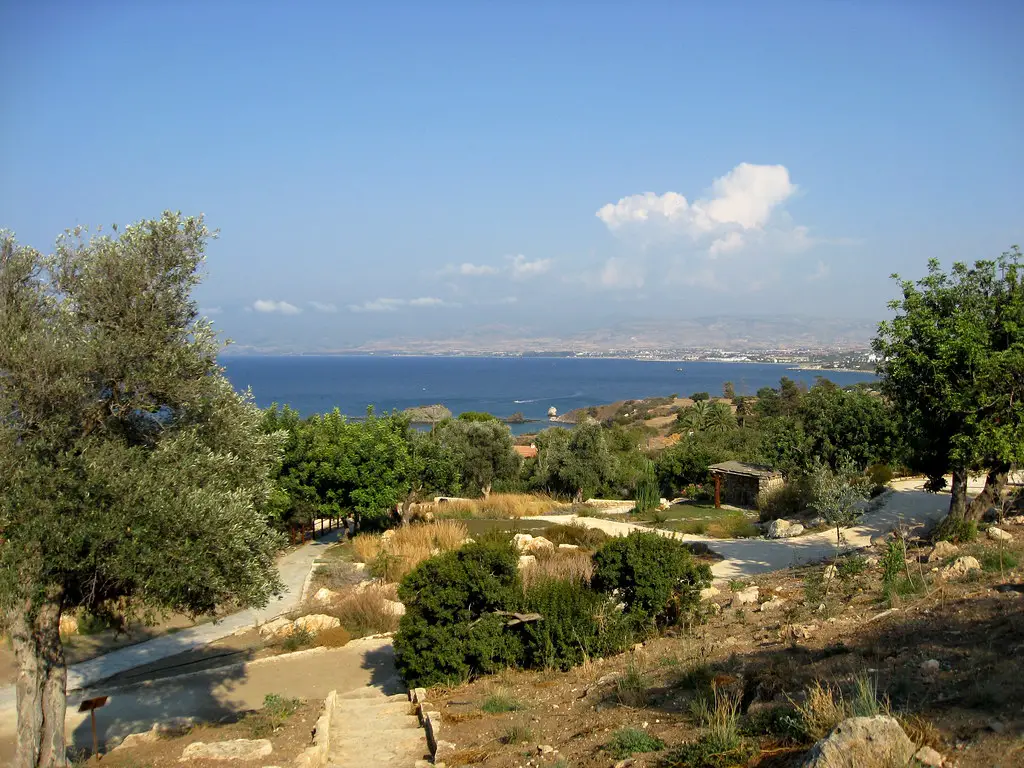
Akamas Peninsula is a rugged and unspoilt nature reserve located in the northwestern corner of Cyprus.
What to see or do:
Don’t miss:
Insider travel tips:
29. Adonis Baths Waterfalls
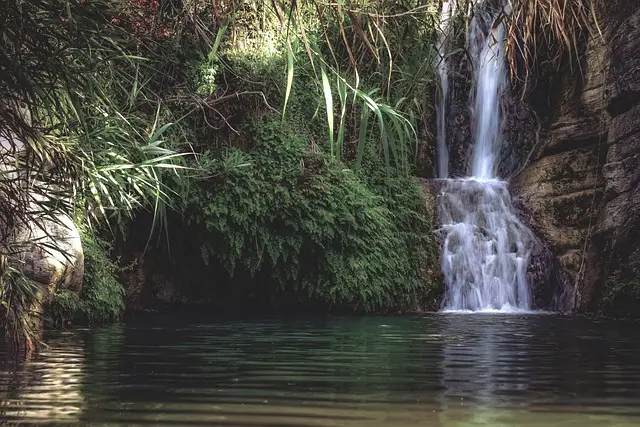
Adonis Baths Waterfalls is a natural wonder located in Kili village, near Paphos town in Cyprus.
What to see or do: The main attraction of Adonis Baths is the beautiful waterfall that forms a small pool of crystal-clear water. Visitors can swim in the refreshing waters or relax on the nearby rocks and take in the stunning views.
There is a restaurant, a souvenir shop, and a small botanical garden for visitors to explore.
Don’t miss: Don’t miss the chance to take a dip in the natural pool beneath the waterfall. The water is said to have healing and rejuvenating properties.
Also, make sure to check out the botanical garden and take a stroll through the lush greenery.
Insider travel tips: – Adonis Baths can get crowded during peak season, so it’s best to arrive early in the day.